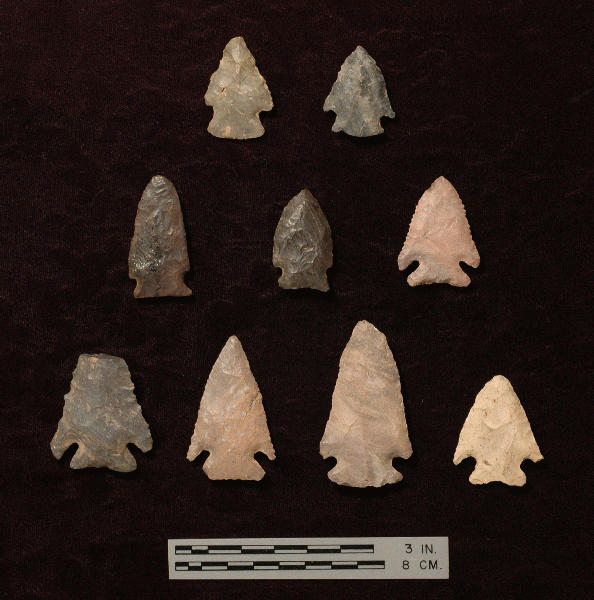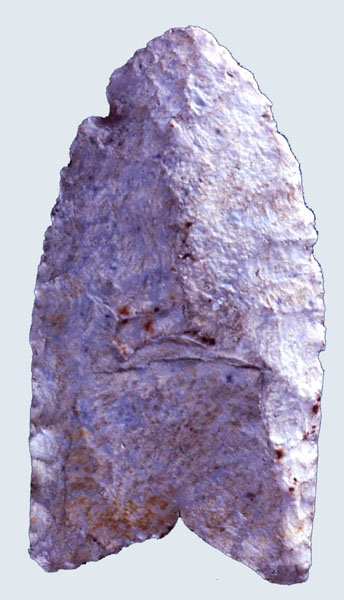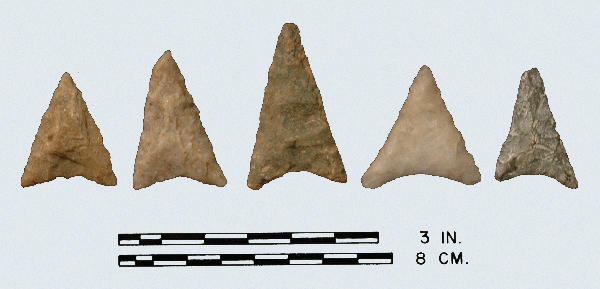
Kirk Corner Notched: Top Row: all chert; Middle Row: all chert; Bottom Row: chert, chert, chert, rhyolite.
Type Corner Notched Early-Archaic
Defining Attributes
The Kirk Corner Notched point has a large triangular blade with a straight base, corner notches, and serrated edges.
Chronology
The Kirk Corner Notched point dates to the Early Archaic period, 7400 to 6500 BCE. Coe (1964) noted that this type appears to have evolved from the earlier Palmer type. The overall size about doubled, and the bases ceased to be ground. At the St. Albans site in Kanawha County West Virginia, Broyles (1971) obtained a date from charcoal associated with this point type of 6980 +/- 160 BCE. Broyles noted that the small variety of the Kirk Corner Notched point occurs before the large variety, and both varieties occur after the Charleston, but before the St. Albans and LeCroy.
Description
- Blade: The blade is triangular with straight or excurvate edges. The edges are serrated (some deeply) and occasionally beveled.
- Base: The base is generally straight or slightly rounded, but not ground smooth. Bases may be as wide as or wider than the blade. The shoulders are well defined, many are straight, but most have barbs projecting toward the base forming a notch 10 to 14 mm wide.
- Size: Length ranges from 40 to 100 mm with an average of 60mm. Width ranges from 20 to 45 mm with an average of 30 mm. Thickness ranges from 6 to 12 mm with an average of 8 mm.
- Technique of manufacture: The basic blade appeared to have been made with broad, shallow percussion flakes. The edges were then shaped by pressure flaking, and the serrations were made as a final step.
Discussion
Coe (1964) noted that this type appears to have evolved from the earlier Palmer type. The overall size about doubled, and the bases ceased to be ground. Percussion techniques appeared to have been used more extensively with only the final shaping of the edges, notches, and serrations being done by pressure flaking. On the Nottoway, McAvoy (1997) and Johnson recovered Kirk Corner Notched points below Decatur to above Fort Nottoway. Kirk Corner Notched evolved into Kirk Stemmed and eventually into the Middle Archaic Kirk Serrated.
Defined in Literature
Coe (1964) originally defined the type based on points recovered from the Hardaway Site in the Piedmont of North Carolina. Broyles (1971) also discusses this point type based on points recovered from the St. Albans site in West Virginia.
References



